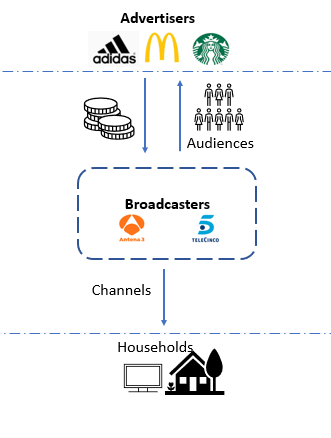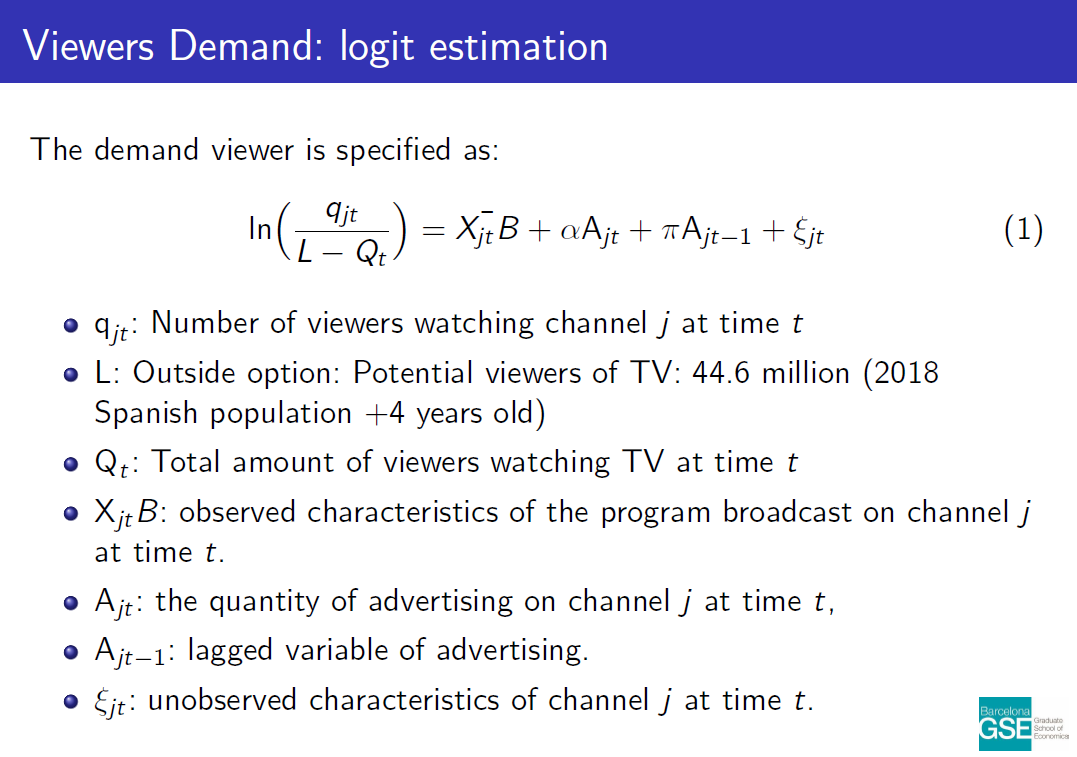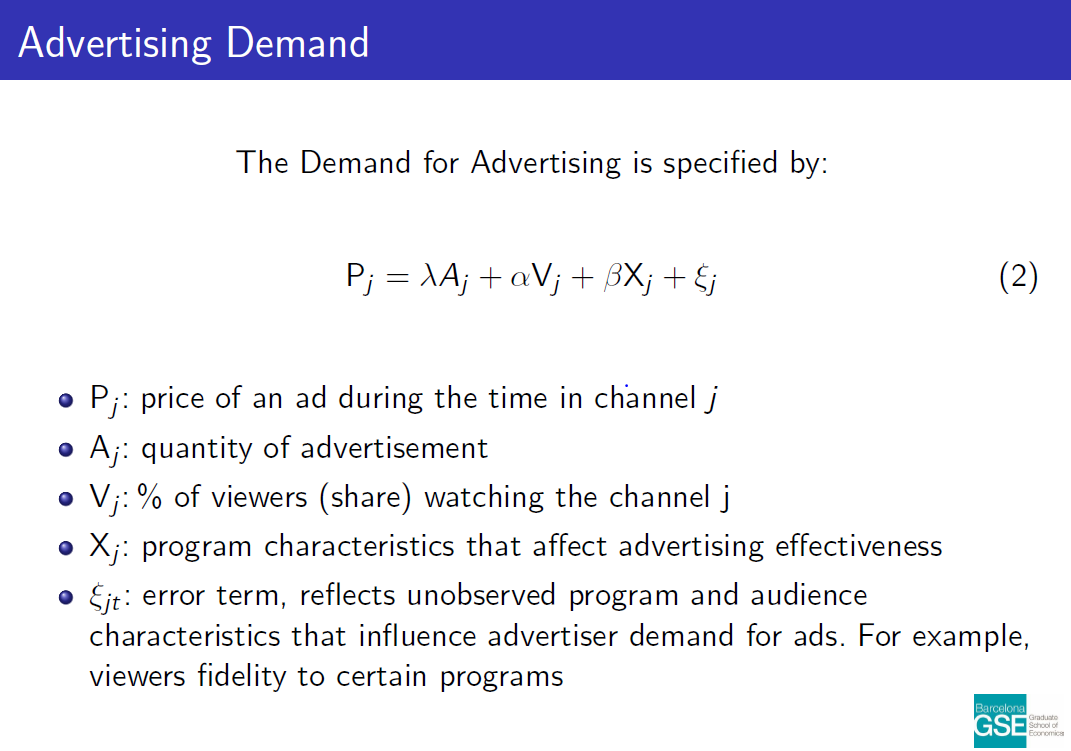
Editor’s note: This post is part of a series showcasing BSE master projects. The project is a required component of all Master’s programs at the Barcelona School of Economics.
Abstract
Our research arises in a context where “free” services in one market cannot be understood without taking into consideration the other side of the market. The Spanish free-to-air TV industry is a two-sided market in which viewers demand TV programs (for free) and advertisers demand advertising spots for which they pay a price that depends mainly on audience. Our main contribution to the two-sided market literature is estimating both viewers and advertisers demand to be able to understand the interactions of both sides of the free-to-air TV market.

This analysis is carried out by developing an econometric analysis of the free to air TV market in Spain that captures the reaction of viewers to a change in advertising quantity and the effect on price of ads that this would bring. We specified Viewers Demand in the Spanish free-to-air TV through a logit model to analyse the impact of advertising minutes on the audience share and, we specified Advertisers Demand by an adaptation of the model of Wilbur (2008) to understand the effect of audience share and advertising quantity on prices of ads.
Conclusions
The results of the Viewers Demand model show an elastic demand and that viewers are averse to advertising regardless of the day but during prime time they are a bit more ad tolerant, especially from 10pm to 11 pm.

On the other side of the market, the Advertising Demand model shows that advertisers are relatively inelastic to both an increase of adds and an increase in audience share. This may be due to the fact that the data available for this project is precisely coming from the most viewed channels, for which advertisers would have more inelastic demand.

As expected, the results show that advertisers are more elastic with regards to audience share than to quantity of advertising.
Connect with the authors
- Sully Calderón, Economic Advisor at Comisión Federal de Competencia Económica (México)
- Aida Moreu, Research Analyst at Compass Lexecon (Madrid)
About the BSE Master’s Program in Competition and Market Regulation
